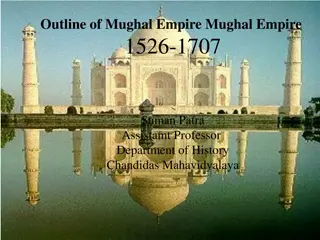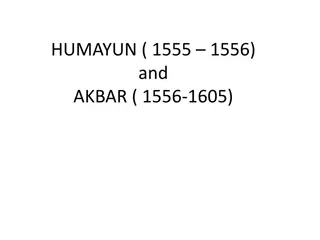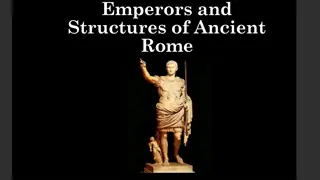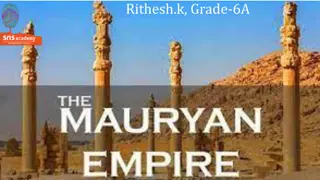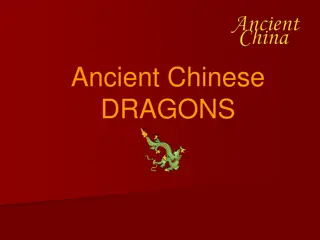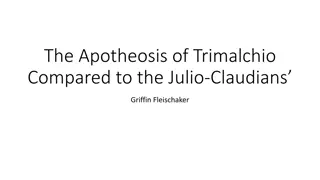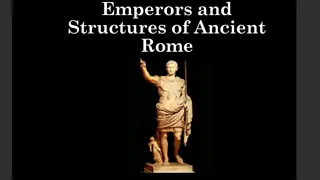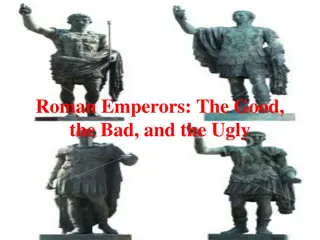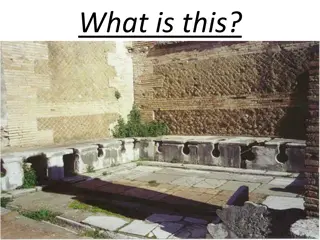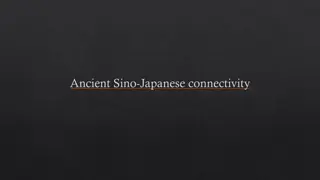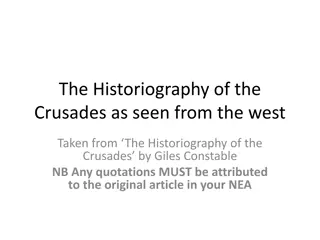Outline of Mughal Empire Mughal Empire 1526-1707.
The Mughal Empire in India from 1526 to 1707 was a significant period marked by notable rulers such as Babur, Humayun, Akbar, Jehangir, Shah Jehan, and Aurangzeb. These emperors each contributed differently to the empire's development, with highlights including military conquests, administrative ref
6 views • 14 slides
Rajput and Religious Policy of Mughal Emperors: Akbar vs. Aurangzeb
Akbar, the first Mughal emperor, pursued a diplomatic policy towards the Rajputs, aiming to bring them under his suzerainty while maintaining friendly relations. His successor, Aurangzeb, adopted a more aggressive approach, seeking to annex Rajput kingdoms due to religious differences. This shift in
0 views • 6 slides
The Mughal Emperors Humayun and Akbar: A Legacy of Conquest and Diplomacy
Humayun, though not a skilled general, was kind and learned, while Akbar, one of the greatest monarchs of India, expanded the Mughal Empire through military conquests and strategic alliances with the Rajputs. Akbar's policy of religious tolerance and Rajput integration left a lasting impact on the M
0 views • 21 slides
Notable Emperors and Structures of Ancient Rome
Julius Caesar, Augustus Caesar, Hadrian, Marcus Aurelius, Diocletian, and Caligula were significant figures in ancient Rome, each with their own contributions and characteristics. From Julius Caesar's military prowess to Augustus Caesar's establishment of the Roman Empire, and Hadrian's emphasis on
0 views • 11 slides
Overview of Mauryan Empire: Chandragupta, Bindusara, and Ashoka
Mauryan Empire, established by the Mauryas, was the first major empire in India, encompassing a vast territory and surpassing previous dynasties in land control. Chandragupta Maurya, Bindusara, and Ashoka were key emperors who shaped the empire's history. Chandragupta, supported by Chanakya, conquer
0 views • 13 slides
Overview of Early Christian Martyrs in the Roman Empire
Explore the historical context of early Christian martyrs in the Roman Empire, starting from the first century with the reign of Augustus to the turmoil and persecutions in the third century under emperors like Diocletian. Learn about the Roman religion, the Five Good Emperors, and the social dynami
0 views • 24 slides
Mythical Dragons in Ancient Chinese Culture
Ancient China believed in powerful dragons which were symbols of emperors and guardians. These mythical creatures had unique characteristics and were thought to possess magical powers. Various types of dragons such as Wood Dragons, Fire Dragons, Earth Dragons, Metal Dragons, and Water Dragons were b
0 views • 13 slides
Comparing Apotheosis in Roman Culture: Trimalchio and the Julio-Claudians
Tracing the concept of apotheosis in Roman culture, this content explores the contrasting deification processes of Trimalchio and the Julio-Claudian emperors, focusing on the visual representations and societal perceptions of divinity. From Trimalchio's extravagant depiction to the imperial cult of
0 views • 6 slides
Emperors and Structures of Ancient Rome
Julius Caesar expanded the Roman Republic through conquests, Augustus Caesar transformed Rome into an empire, Hadrian was known for good governance and building, Diocletian split the empire, Caligula's reign turned cruel, and Nero's rule was marked by cruelty and the infamous burning of Rome.
0 views • 10 slides
Understanding the Importance of Politeness and Solidarity in Linguistic Choices
Linguistic choices play a crucial role in indicating the social relationship between speakers and listeners. This includes aspects like the Tu/Vous (T/V) distinction in various languages, which originated from addressing emperors in the past. The asymmetrical and symmetrical usage of T/V forms refle
0 views • 34 slides
Roman Emperors Through History: The Good, the Bad, and the Ugly
Explore the fascinating history of Roman emperors, from the wise and just rulers like Augustus and Marcus Aurelius to the tyrannical and infamous ones such as Caligula and Nero. Learn about their achievements, controversies, and ultimate fates, shaping the course of the ancient Roman Empire.
0 views • 10 slides
Exploring Ancient Roman Civilization Through Images and Text
Delve into the intriguing world of ancient Roman civilization through a collection of images and text snippets. Discover the transition from the Roman Republic to the rule of Emperors, examine the behavior of Roman figures, and ponder societal norms and practices of that era.
0 views • 17 slides
Ancient Sino-Japanese Connectivity: From Yayoi Period to Yamato State
In ancient times, the connectivity between Sino-Japanese cultures shaped the emergence of the Yayoi Period and the formation of the Yamato State. The Yayoi Period marked the influx of cultural influences from China and Korea, leading to the development of a new Japanese culture. This culminated in t
0 views • 15 slides
Perspectives on the Historiography of the Crusades
The historiography of the Crusades explores diverse viewpoints from western and eastern sources throughout different periods. Various leaders, including Byzantine emperors, Muslim sultans, and indigenous populations, had unique perspectives. The evolving attitudes towards the Crusades reflect changi
0 views • 25 slides
